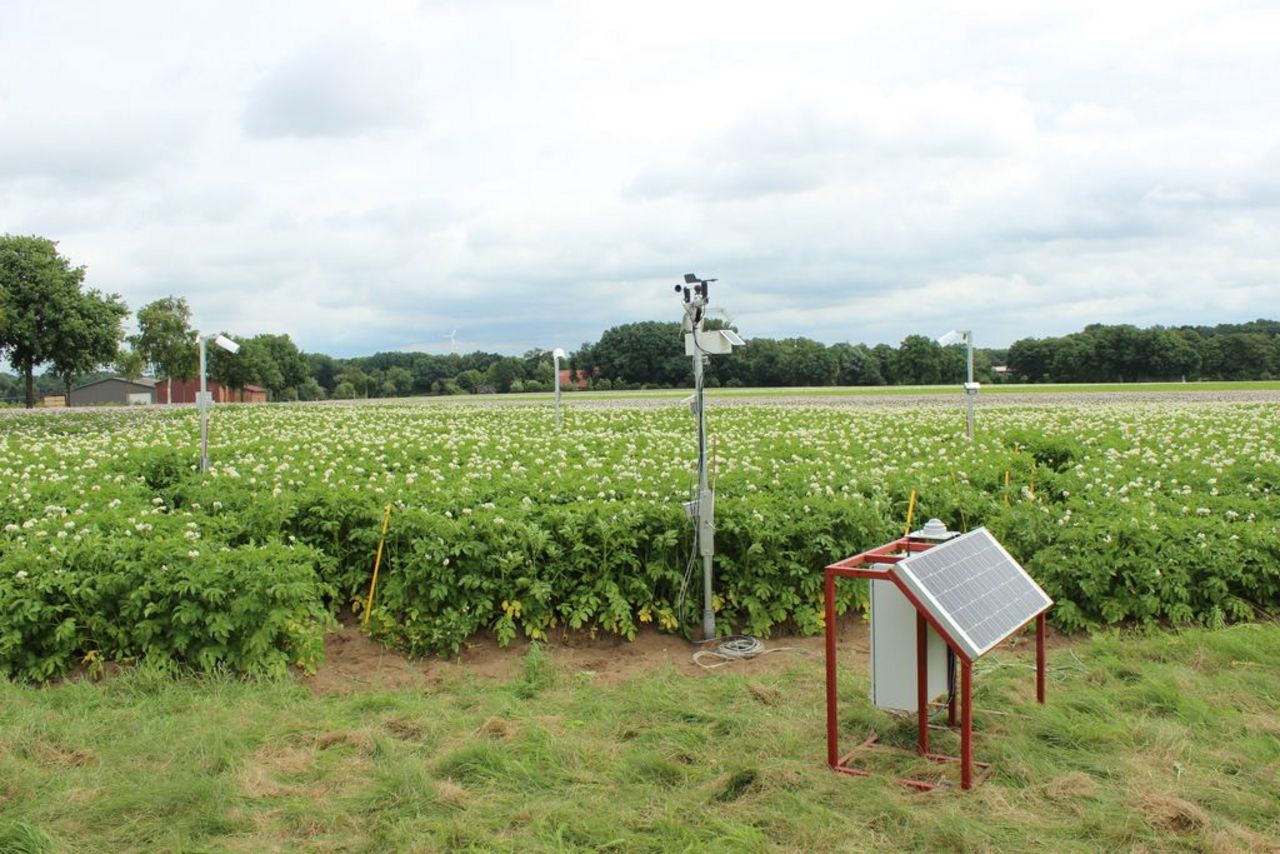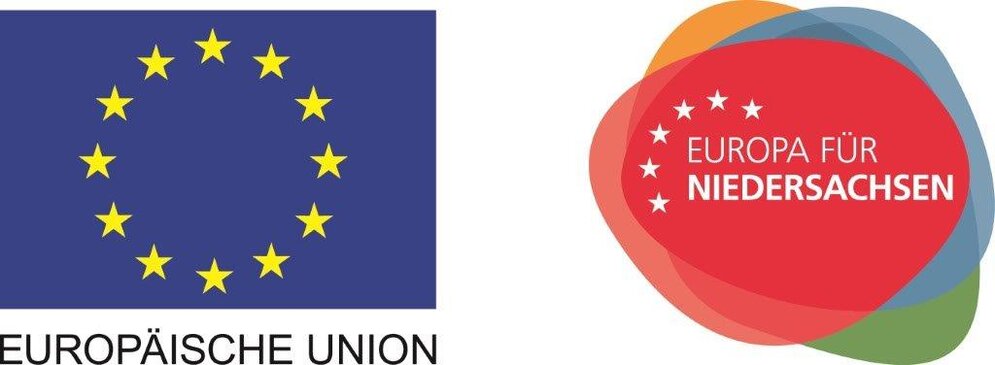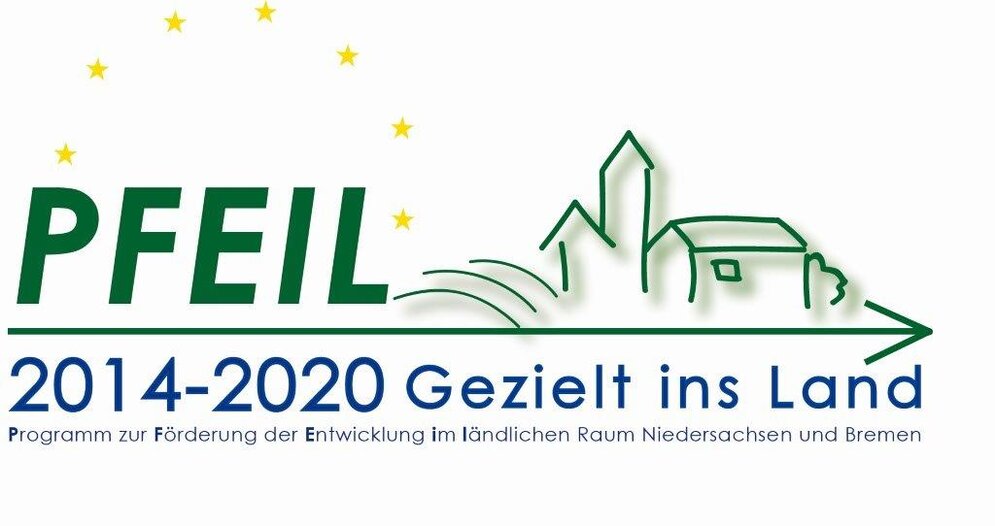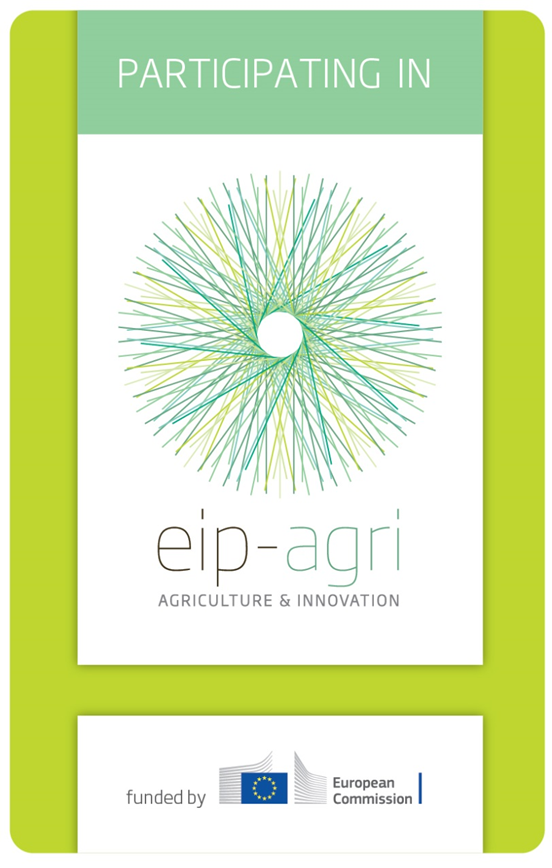Project
Sensor based irrigation control in potatoes

Sensor based irrigation control in potatoes
Some 25 percent of the German potato production is located in northeast Lower Saxony and uses intensive field irrigation. Can a new sensor system allow more efficient water use?
Background and Objective
Northeast Lower Saxony uses the most intensive field irrigation in the whole Germany. During decades, farmers, consultants and companies have established a profound knowledge which is used mainly for the production of potatoes and sugar beets. Climate change will make irrigation more important in Germany. Water availability and irrigation will become central global topics in the future. In many parts of the world, plant production is impossible without irrigation. But there is an increasing competition amongst diverse water use demands. This leads to the requirement of new innovative approaches with the aim of a sustainable irrigation.
Our project goal is some insight and experience whether the contactless measurement of the canopy temperature is a suitable base for irrigation decisions, and how the technique can be implemented into agricultural operating procedures.
The research project is the innovation project of the "operational group" Sustainable Irrigation which is funded together with the project and coordinated by the Ostfalia University.
Target Group
The project focusses on the potato production in northeast Lower Saxony. The results will however also be relevant for other crops and vegetables, and for other regions in Germany and worldwide.
Approach
The surface temperature of potato canopies and the crop water stress index (CWSI) will be measured in irrigation experiments as well as on real production sites. The measurements will be accompanied by measurements of soil water content, plant growth, relative water content (RWC), leaf water potential (Psi) and the acqusition of colour and thermal images. These data shall help to optimize and to evaluate the CWSI model. The new measurement technique will be integrated and tested in the agricultural operation of a local potato producer.
Thünen-Contact

Involved external Thünen-Partners
- Landwirtschaftskammer Niedersachsen
(Oldenburg, Uelzen, Hannover, Deutschland) -
Ostfalia Hochschule für angewandte Wissenschaften
(Suderburg, Deutschland) - Georg-August-Universität Göttingen
(Göttingen, Deutschland)
Funding Body
-
Bundesland Niedersachsen
(national, öffentlich)
Duration
5.2016 - 12.2019
More Information
Project funding number: 276 03 158 037 0257
Funding program: EU - European Innovation Partnerships (EIP)
Project status:
finished
Publications
- 0
Kraft M, Rolfes J, Meinardi D, Riedel A, Röttcher K, Grocholl J, Dittert K (2023) Sensor based irrigation management for potatoes. Braunschweig: Thünen Institute of Agricultural Technology, 2 p, Project Brief Thünen Inst 2023/48a, DOI:10.3220/PB1702892188000
- 1
Kraft M, Rolfes J, Meinardi D, Riedel A, Röttcher K, Grocholl J, Dittert K (2023) Sensorgestützte Beregnungssteuerung in Kartoffeln (SeBeK). Braunschweig: Thünen-Institut für Agrartechnologie, 2 p, Project Brief Thünen Inst 2023/48, DOI:10.3220/PB1702891847000
- 2
Ekinzog EK, Schlerf M, Kraft M, Werner F, Riedel A, Rock G, Mallick K (2022) Revisiting crop water stress index based on potato field experiments in Northern Germany. Agric Water Manag 269:107664, DOI:10.1016/j.agwat.2022.107664
- 3
Meinardi D, Schröder J, Riedel A, Röttcher K, Kraft M, Grocholl J, Dittert K (2021) Sensorgestützte Beregnung von Kartoffeln : Entwicklung des Crop Water Stress Index für Nordostniedersachsen. Braunschweig: Johann Heinrich von Thünen-Institut, 120 p, Thünen Working Paper 179, DOI:10.3220/WP1628164998000
- 4
Zimmermann B, Schlepphorst R, Meinardi D, Kraft M (2019) Mit Sensoren gegen Trockenstress. Top Agrar 46(10):68-71
Publications on the project
- 0
Wintjen P, Schrader F, Schaap M, Beudert B, Brümmer C (2022) Forest-atmosphere exchange of reactive nitrogen in a remote region - Part I: Measuring temporal dynamics. Biogeosciences 19(2):389-413, DOI:10.5194/bg-19-389-2022
- 1
Wintjen P, Schrader F, Schaap M, Beudert B, Kranenburg R, Brümmer C (2022) Forest-atmosphere exchange of reactive nitrogen in a remote region - Part II: Modeling annual budgets. Biogeosciences 19(22):5287–5311, DOI:10.5194/bg-19-5287-2022
- 2
Lucas-Moffat AM, Schrader F, Herbst M, Brümmer C (2022) Multiple gap-filling for eddy covariance datasets. Agric Forest Meteorol 325(Okt. 2022):109114, DOI:10.1016/j.agrformet.2022.109114
- 3
Brümmer C, Rüffer J, Delorme J-P, Wintjen P, Schrader F, Beudert B, Schaap M, Ammann C (2022) Reactive nitrogen fluxes over peatland and forest ecosystems using micrometeorological measurement techniques. Earth Syst Sci Data 14(2):743-761, DOI:10.5194/essd-14-743-2022
- 4
Brümmer C, Rüffer J, Delorme J-P, Wintjen P, Schrader F, Beudert B, Schaap M, Ammann C (2021) Reactive nitrogen fluxes over peatland (Bourtanger Moor) and forest (Bavarian Forest National Park) using micrometeorological measurement techniques, [Data set, Version 1.0] [Datenpublikation] [online]. 13 Dateien. Genève: Zenodo, zu finden in <https://zenodo.org/record/5841074#.YekbfOcxk2w> [zitiert am 20.01.2022], DOI:10.5281/zenodo.5841074
- 5
Wintjen P, Ammann C, Schrader F, Brümmer C (2020) Correcting high-frequency losses of reactive nitrogen flux measurements. Atmos Measurem Techniques 13(6):2923-2948, DOI:10.5194/amt-13-2923-2020
- 6
Brümmer C, Schrader F, Wintjen P, Zöll U, Schaap M (2020) FORESTFLUX - Standörtliche Validierung der Hintergrunddeposition reaktiver Stickstoffverbindungen : Abschlussbericht [online]. Dessau: Umweltbundesamt, 72 p, Texte UBA 40, zu finden in <https://www.umweltbundesamt.de/publikationen/forestflux-standoertliche-validierung-der> [zitiert am 05.03.2020]
- 7
Zöll U, Lucas-Moffat AM, Wintjen P, Schrader F, Beudert B, Brümmer C (2019) Is the biosphere-atmosphere exchange of total reactive nitrogen above forest driven by the same factors as carbon dioxide? An analysis using artificial neural networks. Atmos Environ 206:108-118, DOI:10.1016/j.atmosenv.2019.02.042
- 8
Schrader F, Schaap M, Zöll U, Kranenburg R, Brümmer C (2018) The hidden cost of using low-resolution concentration data in the estimation of NH3 dry deposition fluxes. Sci Rep 8:969, DOI:10.1038/s41598-017-18021-6

![[Translate to English:] [Translate to English:]](/media/_processed_/3/6/csm_Hintergrund-Ausschnitt1_9daaef6b89.jpeg)
![[Translate to English:] [Translate to English:]](/media/_processed_/3/6/csm_Hintergrund-Ausschnitt1_0bd7111163.jpeg)



![[Translate to English:] Logo des Bundesministerium für Ernährung und Landwirtschaft](/media/allgemein/logos/BMEL_Logo.svg)